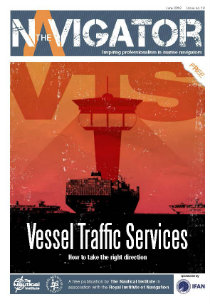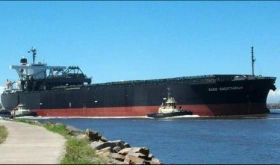A Bulk Carrier was contracted to carry an occasional cargo of steel coils between two ports. When the vessel some time later discharged the cargo, it was noted that tank top plate had been indented. Internal inspection in the double bottom, below the cargo holds, revealed that longitudinals and floors had also been damaged.
The tank top structure had sustained damage over the whole area in the cargo holds used for steel coils. Due to the stowage arrangements made, the point loads on some longitudinals caused them to bend downwards. This in turn affected the supporting transverse girders, and especially, caused buckling in the floors (the web plates in the transverse girder), and bending of some local stiffeners.
The vessel is scheduled for repairs to maintain Class. Most probably many plates and stiffeners in the transverse girders will need to be cut out and replaced, together with some of the affected longitudinals.
Steel coils are rolls of thin steel plating used predominantly in the car industry, and typically, may be of 1–2 m in diameter, with length 0.5 to 2 m. How many steel coils a specific vessel can carry may sometimes be found in the loading manual, but frequently such information is not available.
For the vessel with the damaged tank top, steel coil loading instructions were not available, and neither were hull local strength calculations made beforehand, for this specific cargo. It is suggested that the maximum cargo weight of steel coils has most probably been concluded from the maximum allowed evenly distributed load of the hold. However, as the degree of damage clearly demonstrates, this was not the best assumption for steel coils. The reason is that the coils have probably been resting on every second longitudinal only.
Photo above to the left: A picture taken under the tank top showing buckling of the floor (web plate) and a bent local stiffener. The longitudinal to the left has been severely overloaded while the longitudinal to the right looks almost unaffected
Image above to the right: Illustration of a typical loading situation of steel coils, showing how the point loads from the steel coils will affect some longitudinals more than others
Typical dunnage is 50 mm thick planks, and even if more than three planks are used under each coil, these pieces of wood are not stiff enough to distribute the load to the next longitudinal, not positioned immediately under the steel coil. The photo below to the left, shows typical dunnage with thin pieces of wood. If this dunnage was increased in thickness to say 500 mm or combined with some strong steel H-beams, the load on the tank top could be considered as an evenly distributed load. To use five pieces of dunnage instead of three has very little effect as long as the dunnage wood remains thin (except of course for the point loads on the same longitudinal for very wide coils).
Photo above to the left: Photo illustration of steel coil on thin pieces of wood
Photo above to the right: Photo illustration of typical steel coil cargo
Lessons to be learned
- Steel coils are heavy cargo and when transporting such cargo one should be extra careful to confirm the local strength of the tank top in the relevant cargo holds.
- Steel coils should not be considered as an evenly distributed load unless the weight is thoroughly distributed by strong steel beams and/or very (very!) thick pieces of wood, as dunnage.
- A good rule of thumb is that the steel coil weight should be limited to half the allowable evenly distributed weight of a hold.
- During loading operations of heavy cargo, the supervising crew members should be aware of the hull structure under the tank top. Dunnage should preferably be placed in transverse
- direction of the vessel in order to land on several longitudinals.
- The vessel’s class e.g. DNV may be consulted for swift expert assistance in calculating tank top strength for steel coil loading, in order to avoid damage to the hull structure, as experienced in this case.
Source: DNV
















Leave a Comment